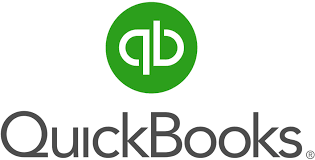Managing payroll is one of the most critical tasks for any business. Employees expect to be paid on time, and the process must comply with various tax regulations. QuickBooks Online (QBO) simplifies many of these responsibilities, allowing small and medium-sized businesses to streamline payroll processes. However, as businesses grow or experience changes, they may need to modify their pay periods. Changing the payroll pay period in QuickBooks Online is a straightforward process, but it’s essential to do it correctly to avoid disruptions in payroll operations or compliance issues.
In this detailed guide, we will walk you through the process of changing your payroll pay period in QuickBooks Online, explain the different pay period options available, and provide tips on ensuring a smooth transition. By the end of this article, you’ll have all the information you need to manage your pay periods efficiently.
Understanding Pay Periods in QuickBooks Online
Before diving into the steps for changing the payroll pay period, it’s essential to understand what a pay period is and how it works in QuickBooks Online. A pay period is a recurring time frame over which employee wages are calculated and paid. QuickBooks Online allows you to set different pay period frequencies to match the needs of your business and employees.
how to delete a credit memo in quickbooks | Delete A credit Memo In QuickBooks | Understanding Uncleared Transactions in QuickBooks | How can i talk to quickbooks enterprise support | QuickBooks payroll Support Number | What QuickBooks payroll Support Number | Easy Connection intuit to quickbooks payroll support | How do i contact quickbooks payroll support | quickbooks error 1904 icwrapper dll failed to register |
The most common types of pay periods include:
Weekly: Employees are paid once every week, usually resulting in 52 pay periods per year.
Biweekly: Employees are paid every two weeks, resulting in 26 pay periods per year.
Semi-monthly: Employees are paid twice a month (typically on the 15th and 30th), which totals 24 pay periods annually.
Monthly: Employees receive their paychecks once a month, totaling 12 pay periods annually.
Each pay period type has its advantages and can affect your payroll management, tax calculations, and employee satisfaction. Once you’ve determined the right pay period frequency for your business, it’s time to make the necessary changes in QuickBooks Online.
Why Would You Need to Change Your Payroll Pay Period?
There are several reasons why a business might need to change its payroll pay period:
Business Growth or Expansion: As a business expands, payroll structures may need to evolve. For example, transitioning from a biweekly to a semi-monthly payroll schedule might better accommodate a larger workforce.
Employee Preferences: Employees may prefer a more frequent or less frequent pay schedule. Shifting from a monthly to a biweekly pay period could help with employee retention or satisfaction.
Legal Compliance: Some states or countries have regulations around the minimum frequency of employee payments. If your business expands into a new region, you may need to adjust your payroll pay period to stay compliant with local laws.
Financial Considerations: Changing your pay period can affect your business’s cash flow. Aligning the payroll frequency with your cash inflows can improve financial management.
Operational Changes: Changes in company operations, like a new payroll team, could also necessitate adjusting the pay period for ease of management.
Running Errors in quickbooks desktop | Comprehensive guide to quickbooks 2025 | Ultimate Guide to fix the quickbooks error| How do i contact quickbooks payroll support | How to fix quickbooks unexpected error| How do i contact quickbooks payroll support | QuickBooks POS Client Cannot Connect to Server” Error | QuickBooks Error OL 203 | WDDM Service Not Running Error in QuickBooks Desktop | How to fix Quickbooks POS Client Cannot connect with server Error| How to Contact QuickBooks payroll Support
Things to Consider Before Changing Your Pay Period in QuickBooks Online
Changing your pay period in QuickBooks Online isn’t complicated, but there are a few important considerations to keep in mind to ensure a smooth transition:
Timing of the Change: It’s best to change your pay period at the beginning of a new payroll cycle to avoid overlapping periods or confusing your employees.
Employee Communication: Inform your employees about the upcoming change well in advance. Clearly explain how it will affect their pay dates and any adjustments they should expect in their paychecks.
Tax and Compliance Implications: Different pay frequencies can affect tax calculations, benefits deductions, and compliance with federal or state regulations. Ensure that you consult with your accountant or payroll advisor before making any significant changes.
Existing Payroll Schedules: Make sure to address any outstanding payroll runs or checks before switching to a new pay period to avoid errors.
Employee Contracts: Some employees may have specific pay periods outlined in their contracts. Ensure that any changes comply with these agreements.
Notes: How does Kate Winslet’s performance in The Regime compare to her roles in other satirical shows
Step-by-Step Guide to Changing Payroll Pay Period in QuickBooks Online
Now that you’re aware of the implications of changing your payroll pay period, here’s how to do it step-by-step:
Step 1: Sign in to QuickBooks Online and Access Payroll Settings
Begin by signing in to your QuickBooks Online account.
Navigate to the Gear Icon (Settings) in the upper right corner.
Under the “Payroll” section, click on Payroll Settings.
Step 2: Navigate to Pay Schedules
In the Payroll Settings menu, find and select Pay Schedules.
QuickBooks will display your current pay schedule(s), which details how frequently employees are paid.
Step 3: Edit an Existing Pay Schedule
To change an existing pay period, select the pay schedule you wish to modify.
Click on the Edit button to make changes to the current schedule.
Step 4: Select a New Pay Frequency
In the edit screen, you’ll see options to adjust the Pay Frequency.
Select the new frequency (e.g., weekly, biweekly, semi-monthly, or monthly) that aligns with your business needs.
Step 5: Set the Next Pay Period End Date
QuickBooks will prompt you to enter the next Pay Period End Date. Ensure that the end date aligns with the new schedule you’ve selected.
This is crucial because it will determine when QuickBooks calculates and processes payroll for the next period.
Step 6: Set the Next Paycheck Date
After setting the pay period, you’ll also need to enter the Paycheck Date—the date when employees will receive their pay for the new pay period.
Step 7: Save Changes
Once you’ve made all necessary changes, click Save to confirm your new pay schedule.
Step 8: Review Employee Assignments
Ensure that all employees are assigned to the correct pay schedule. If you have different groups of employees with different pay frequencies, you’ll need to assign each employee accordingly.To do this, go to the Employees tab in your payroll settings and verify their pay schedule assignments.
Step 9: Run Payroll with the New Pay Schedule
With your new pay schedule in place, you’re ready to run payroll for the next period.
Navigate to the Run Payroll section and verify that everything looks correct under the new pay frequency.
Step 10: Communicate with Employees
Inform your employees of the changes before the next payroll run. Provide them with the details of the new pay period and paycheck dates so they know when to expect their compensation.
How do i contact quickbooks support number | How do i get Quickbooks enterprise support number | Qucickbooks payroll support number | Quickbooks payroll support number | Quickbooks enterprise support number | Quickbooks premier support number | Quickbooks payroll support number | Quickbooks payroll support number | Quickbooks payroll support number | Quickbooks payroll support number | Quickbooks payroll support number | Quickbooks enterprise support number | Quickbooks payroll support number | retained earnings in quickbooks | Quickbooks desktop support by phone | Quickbooks premier support number
Tips for a Smooth Transition
Double-Check Employee Data: Ensure that all employee details, such as hourly rates, salary, and tax information, are correct before running payroll with the new pay period. This will help avoid errors that might disrupt payroll.
Test Payroll: Run a test payroll in QuickBooks Online before committing to the new schedule. This will allow you to verify that all calculations, deductions, and taxes are being processed correctly with the new pay period.
Consult with a Payroll Expert: If you’re unsure about how the change in pay period will affect tax liabilities or benefits deductions, it’s a good idea to consult with a payroll expert or accountant.
Track Transition Payroll Periods: If you’re switching between two different payroll periods, keep a close eye on the transition period to ensure no gaps or overlaps in employee pay.
Backup Your Data: Before making significant changes to your payroll, ensure you have backed up your QuickBooks Online data. This can help protect you in case you need to revert to the previous settings.
Common Questions About Changing Payroll Pay Period in QuickBooks Online
Q1: Can I change the pay period mid-year?
Yes, you can change your pay period mid-year. However, you need to be cautious about compliance and timing to ensure a smooth transition for employees and avoid payroll errors.
Q2: Will changing my pay period affect employee taxes?
Changing the pay period may affect the timing of deductions and tax payments. It’s crucial to double-check with your accountant or payroll specialist to ensure compliance with tax laws when changing the pay period.
Q3: What happens to scheduled payroll runs when I change the pay period?
Scheduled payroll runs tied to the previous pay schedule will be affected. You should manually adjust these or reschedule them to fit the new payroll schedule.
Q4: Can I have multiple pay periods for different employees?
Yes, QuickBooks Online allows you to create different pay schedules for various employees. For example, you might have salaried employees on a semi-monthly schedule and hourly employees on a biweekly schedule.
Q5: How do I revert to the old pay schedule if needed?
If you need to revert to a previous pay period, you can go back to the Payroll Settings and repeat the steps for modifying the pay schedule. Be sure to adjust the next pay period end date and paycheck date accordingly.
Conclusion
Changing your payroll pay period in QuickBooks Online can seem like a daunting task, but by following the steps outlined in this guide, you can complete the process quickly and efficiently. Whether you’re moving from biweekly to semi-monthly or adjusting payroll frequencies due to business growth, QuickBooks Online makes it easy to customize payroll settings to suit your company’s needs. Just be sure to keep your employees informed, review all changes carefully, and consult with a payroll professional if needed to ensure


